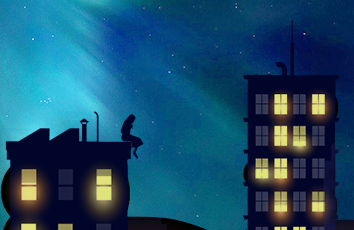
Chinese New Year
Chinese New Year,known in Chinese as the Spring Festival or the Lunar New Year,is the most important of the traditional Chinese holidays.The festival proper begins on the first day of the first lunar month in the Chinese calendar and ends on the 15th,on the Lantern Festival.
Chinese New Year's Eve is known as Chu Xi.Chu literally means "change" and xi means "eve".
Celebrated internationally in areas with large populations of ethnic Chinese,Chinese New Year is considered a major holiday for Chinese as well as for ethnic groups who were strongly influenced by Chinese culture.This includes Japanese,Koreans,Miao (Chinese Hmong),Mongolians,Vietnamese,Tibetans,the Nepalese and the Bhutanese (see Losar).
Chinese New Year is also the time of the the largest human migration,when overseas Chinese all around the world travel home to have reunion dinners with their families on Chinese New Year's eve.
●New Year dates
The Chinese New Year dates are determined by the lunisolar Chinese calendar,which is also used in countries that have adopted or have been influenced by Han culuture,notably the Koreans,the Japanese,the Tibetans,the Vietnamese and the pagan Bulgars.
Chinese New Year starts on the first day of the new year containing a new moon (some sources include New Year's Eve) and ends on the Lantern Festival fourteen days later.This occurs around the time of the full moon as each lunation is about 29.53 days in duration.In the Gregorian calendar,the Chinese New Year falls on different dates each year,on a date between January 21 and February 20.In traditional Chinese Culture,Lichun is a solar term marking the start of spring,which usually falls on either February 4 or 5.
The dates for the Spring Festival from 1996 to 2019 (in the Gregorian calendar) are listed below,along with the year's presiding animal zodiac and its earthly branch.The names of the earthly branches have no English counterparts and are not the Chinese translations of the animals.
Many non-Chinese confuse their Chinese birth-year with their Gregorian birth-year.As the Chinese New Year starts in late January to mid February,the Chinese year dates from 1 January until that day in the new Gregorian year remain unchanged from the previous Gregorian year.For example,the 1989 year of the snake began on 6 February 1989.The year 1990 is considered by some people to be the year of the horse.However,the 1989 year of the snake officially ended on 26 January 1990.This means that anyone born from January 1 to 25 January 1990 was actually born in the year of the snake rather than the year of the horse.
Many online Chinese Sign calculators do not account for the non-alignment of the two calendars,incorrectly using Gregorian-calendar years rather than official Chinese New Year dates.
See Chinese astrology for a list of Chinese New Year dates for every year from 1900 to 2020,covering one full sexagesimal cycle (1924–1983) and portions of two others.
●History
It is unclear when the beginning of the year was celebrated before the Qin Dynasty.It is possible that the beginning of the year began with month 1 during the Xia Dynasty,month 12 during the Shang Dynasty,and month 11 during the Zhou Dynasty in China.We know that intercalary months,used to keep the lunar calendar synchronized with the sun,were added after month 12 during both the Shang Dynasty (according to surviving oracle bones) and the Zhou Dynasty (according to Sima Qian).The first Emperor of China Qin Shi Huang changed the beginning of the year to month 10 in 221 BC.Whether the New Year was celebrated at the beginning of month 10,of month 1,or both is unknown.In 104 BC,Emperor Wu of the Han Dynasty established month 1 as the beginning of the year,where it remains.
●Myths
According to legend,in ancient China,the nián (年),a man-eating beast from the mountains,could silently infiltrate houses to prey on humans.The people later learned that the nian was sensitive to loud noises and the color red,so they scared it away with explosions,fireworks and the liberal use of the color red.These customs led to the first New Year celebrations.Guò nián ,which means to celebrate the new year,literally means the passing of the nian beast.
●Public Holiday
Chinese New Year is observed as a public holiday in a number of countries and territories where a sizeable Chinese population resides.Since Chinese New Year falls on different dates on the Gregorian calendar every year on different days of the week,some of these governments opt to shift working days in order to accommodate a longer public holiday.Also like many other countries in the world,a statutory holiday is added on the following work day when the New Year falls on a weekend.
The Spring Festival
Spring Festival is the most important festival in China .It’s to celebrate the lunar calendar ‘s new year .In the evening before the Spring Festival ,families get together and have a big meal .In many places people like to set off firecrackers .Dumplings are the most traditional food .Children like the festival very much ,because they can have delicious food and wear new clothes .They can also get some money from their parents.This money is given to children for good luck .People put New Year scrolls on the wall for good fortune .
The Spring Festival lasts about 15 days long .People visit relatives and friends with the words “Have all your wishes ”.People enjoy the Spring Festival ,during this time they can have a good rest .
Paper cutting is one of the most popular traditional folk art forms in China. Chinese paper cutting has a history of over 1500 years, which was especially popular in the Ming and qing dynasty . People...
The Spring Festival is the most important festival for the Chinese people and is when all family members get together,just like Christmas in the West.All people living away from home go back,becoming ...